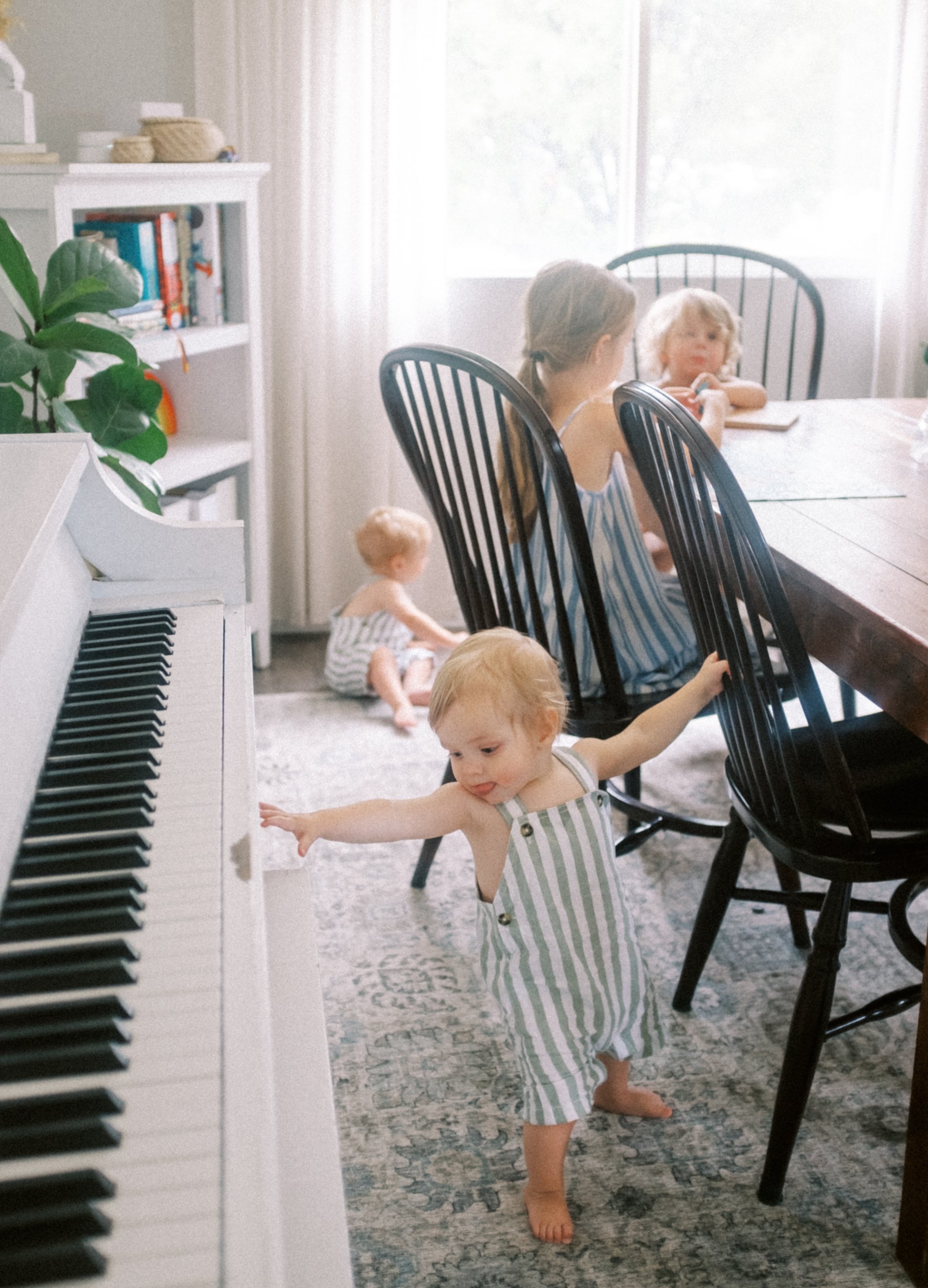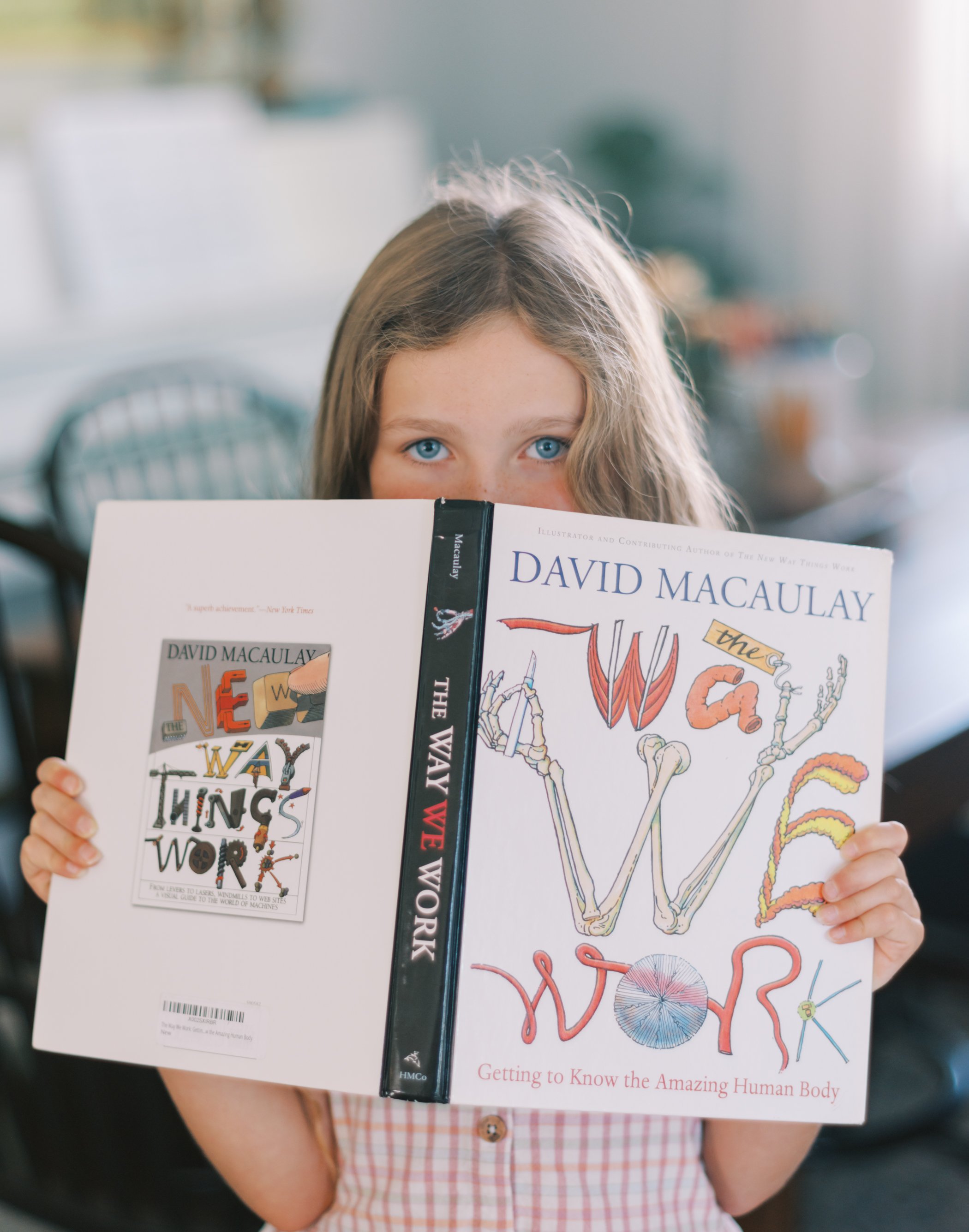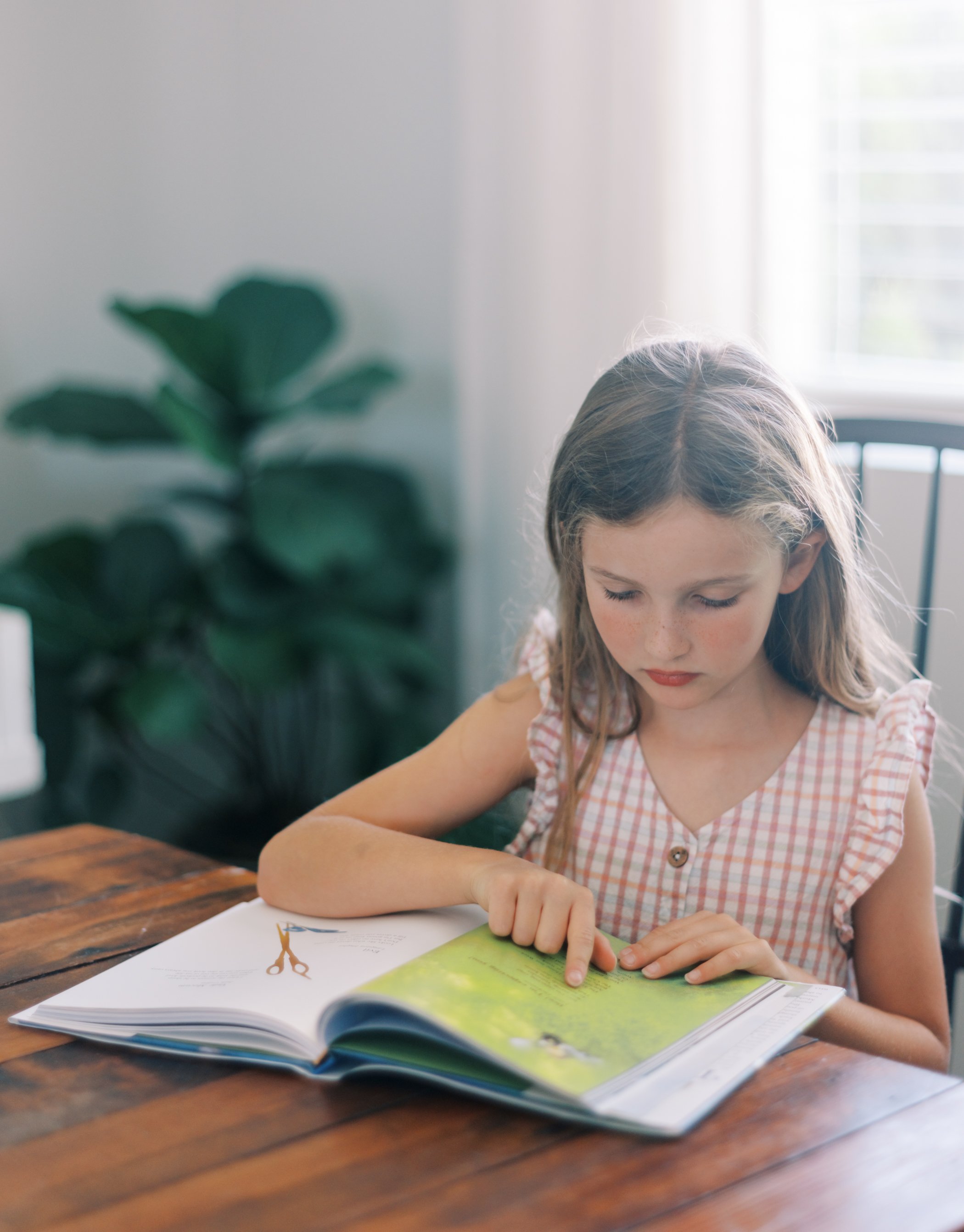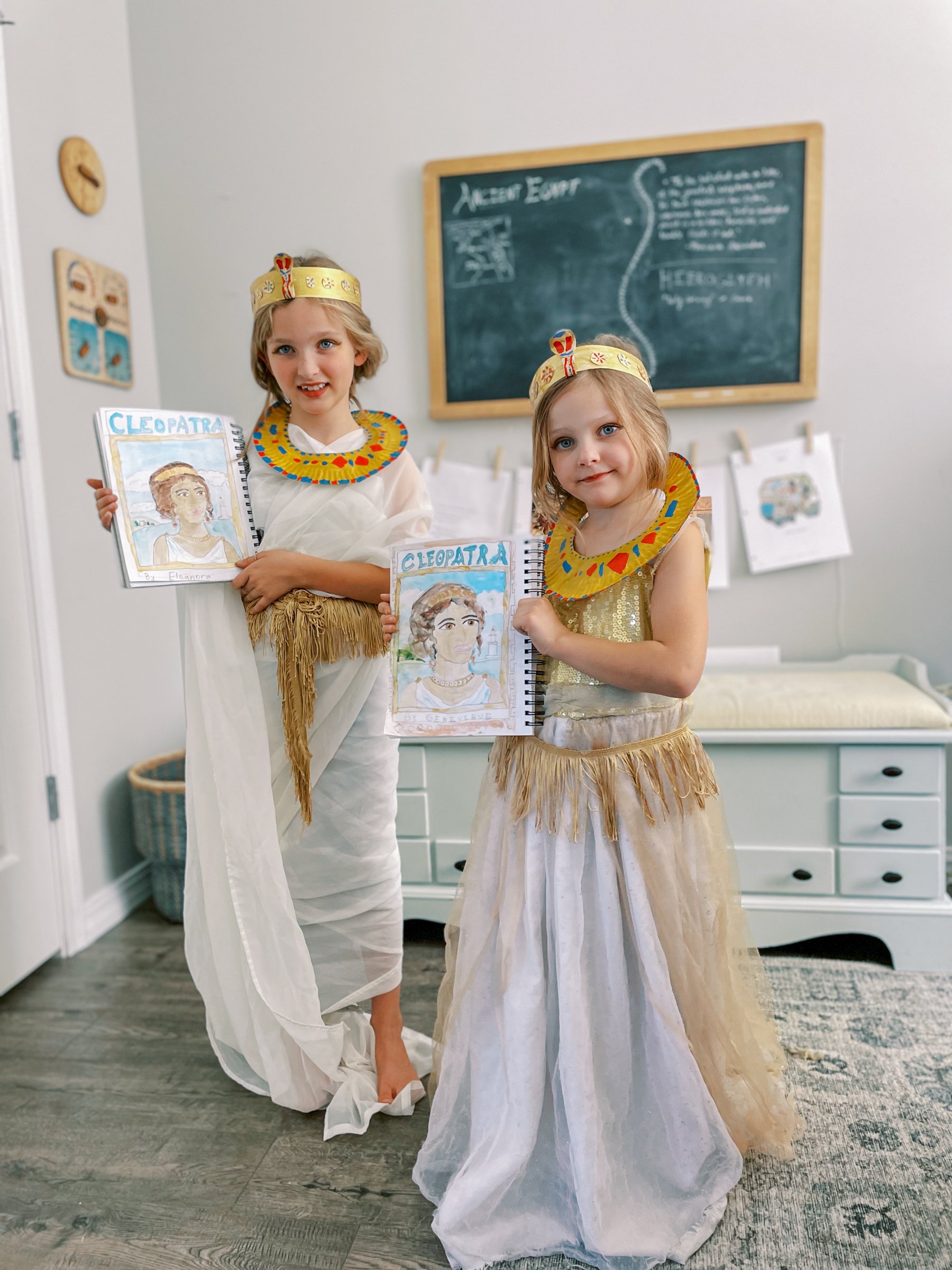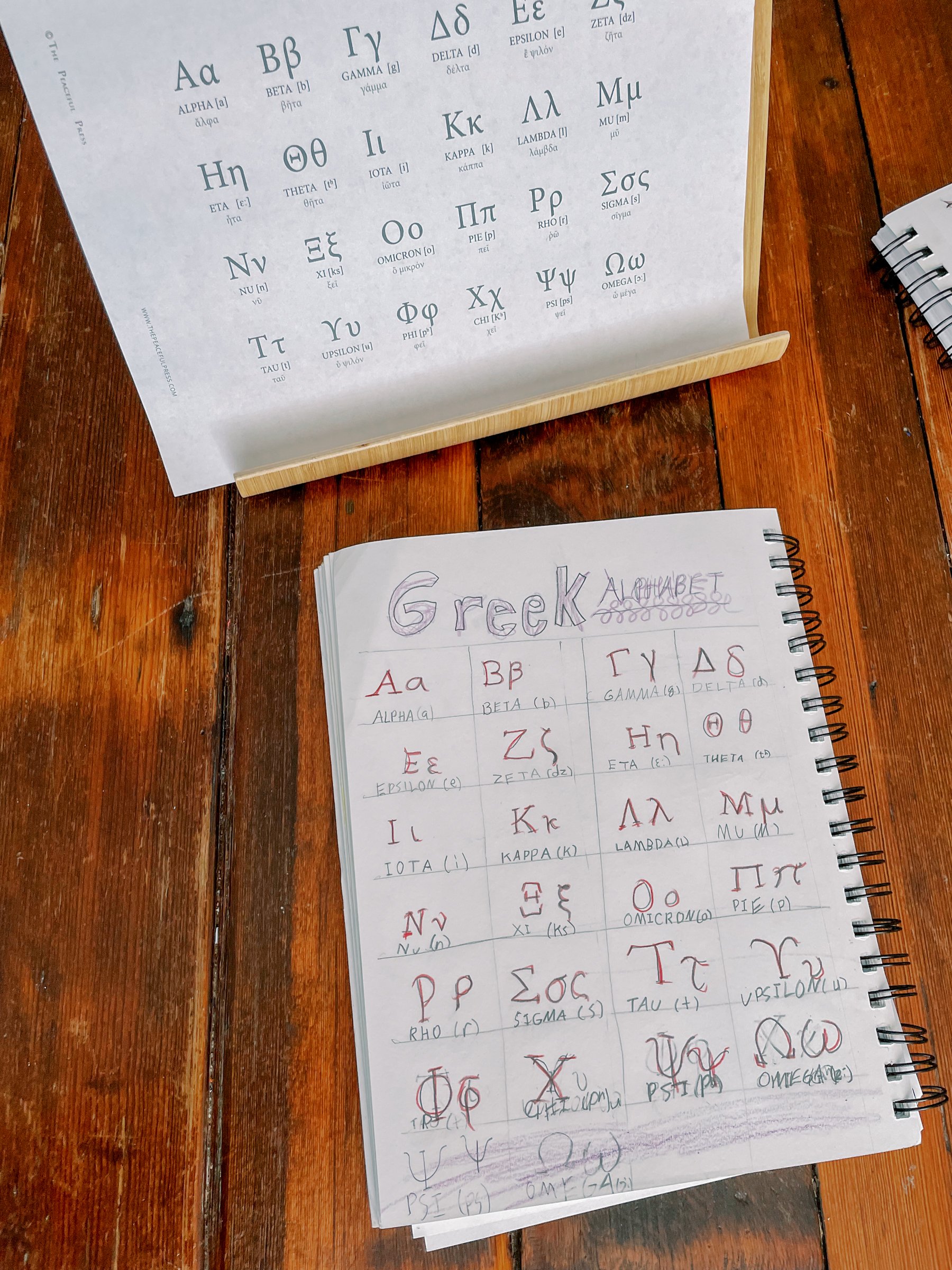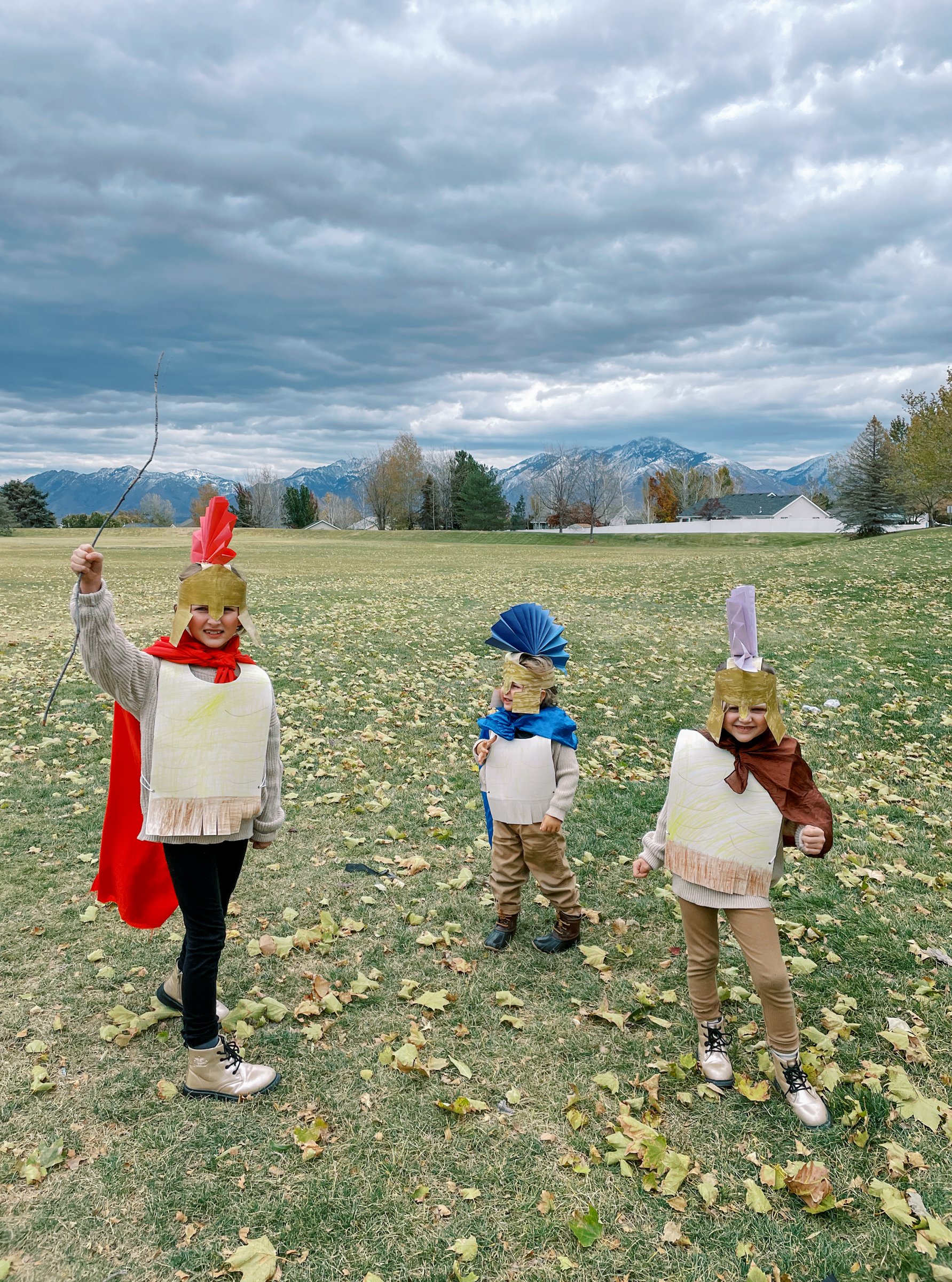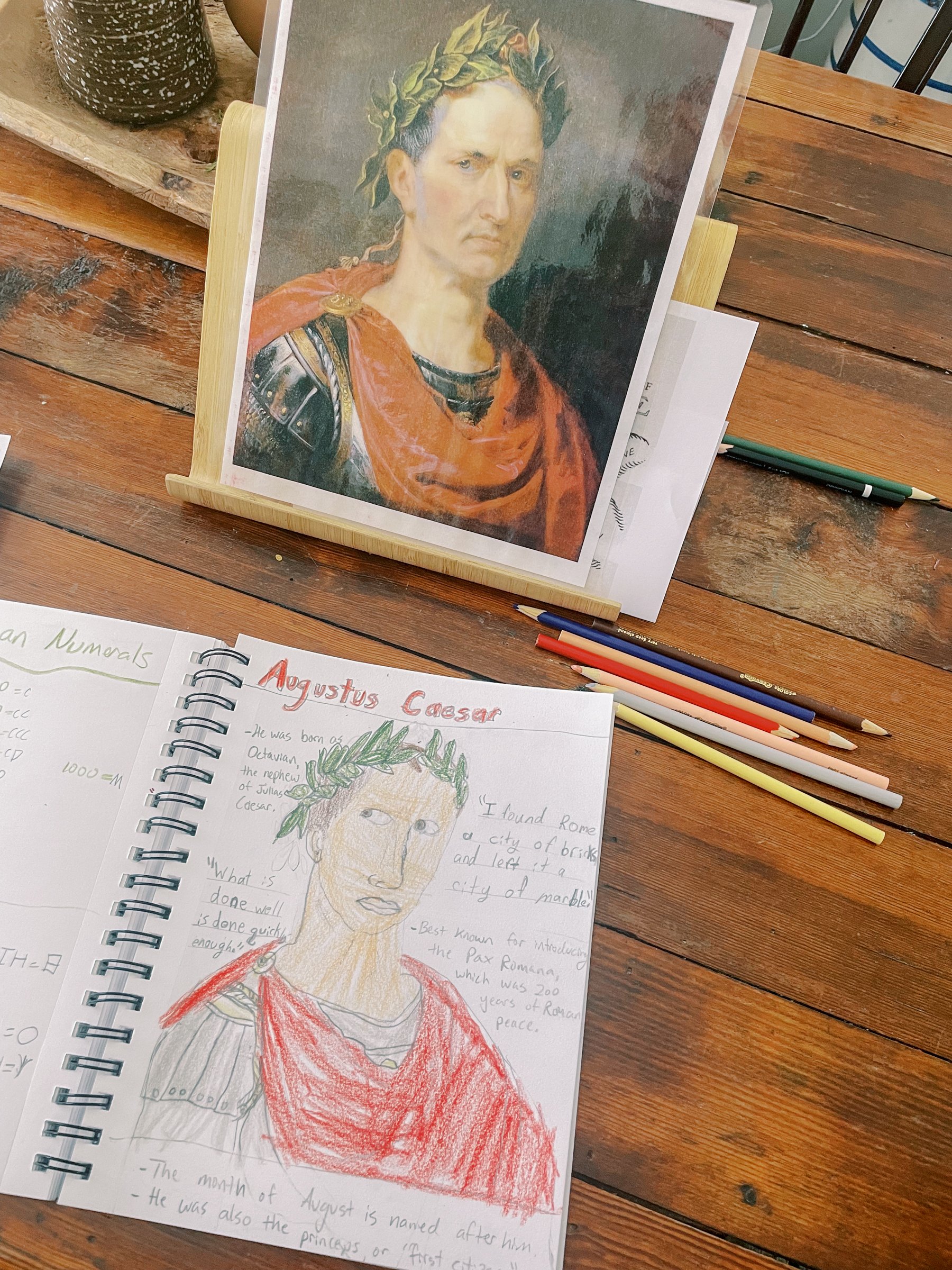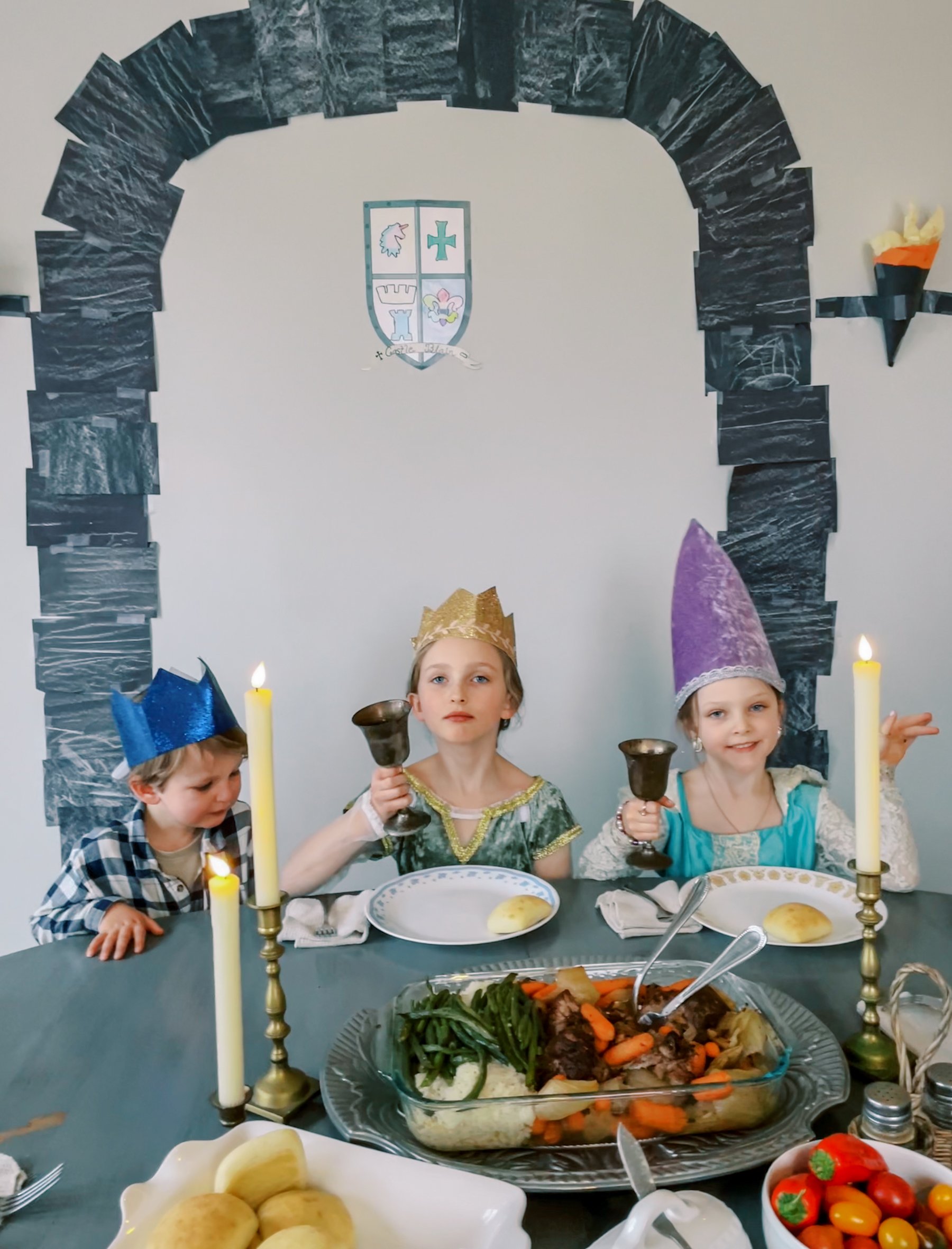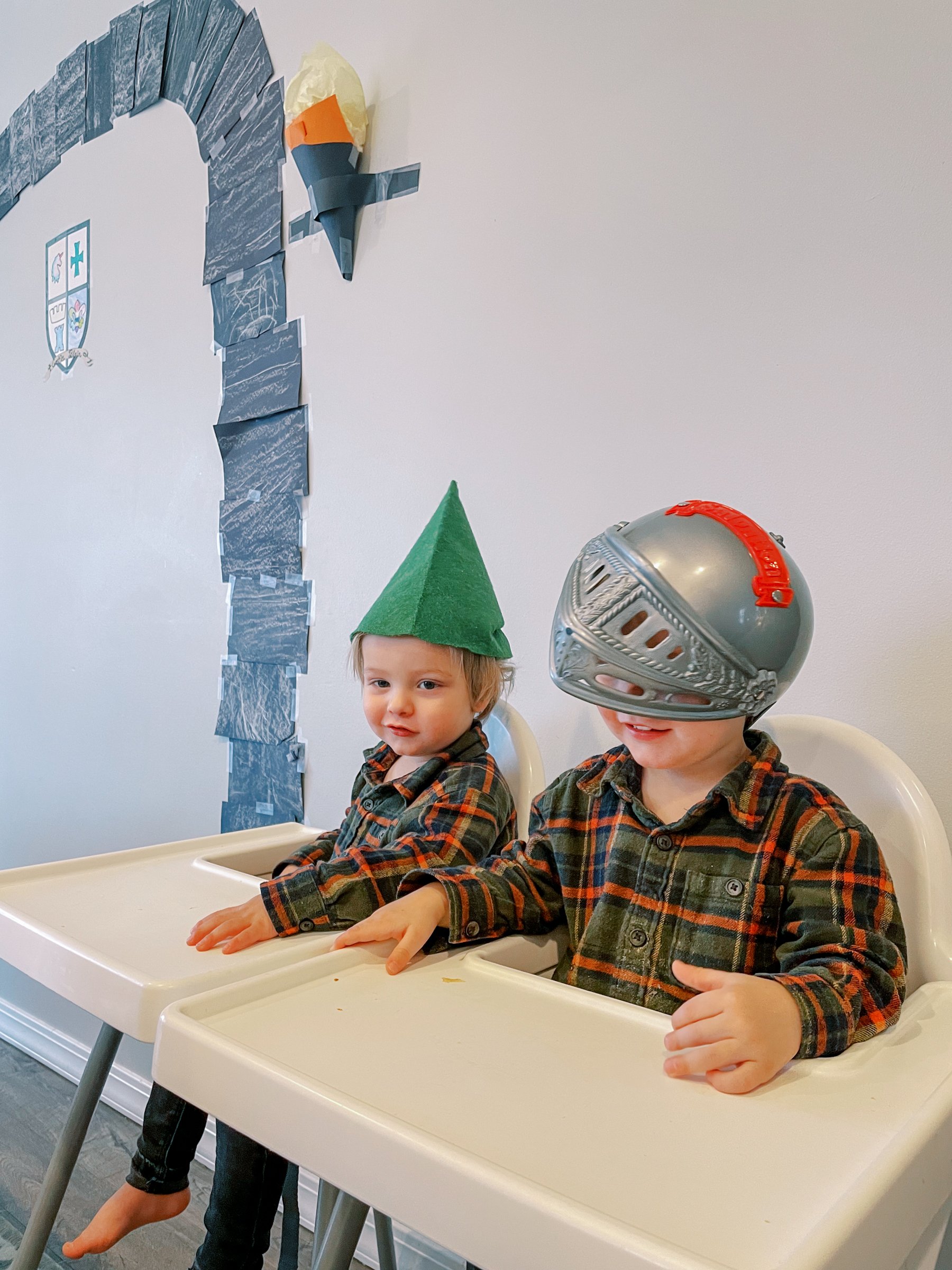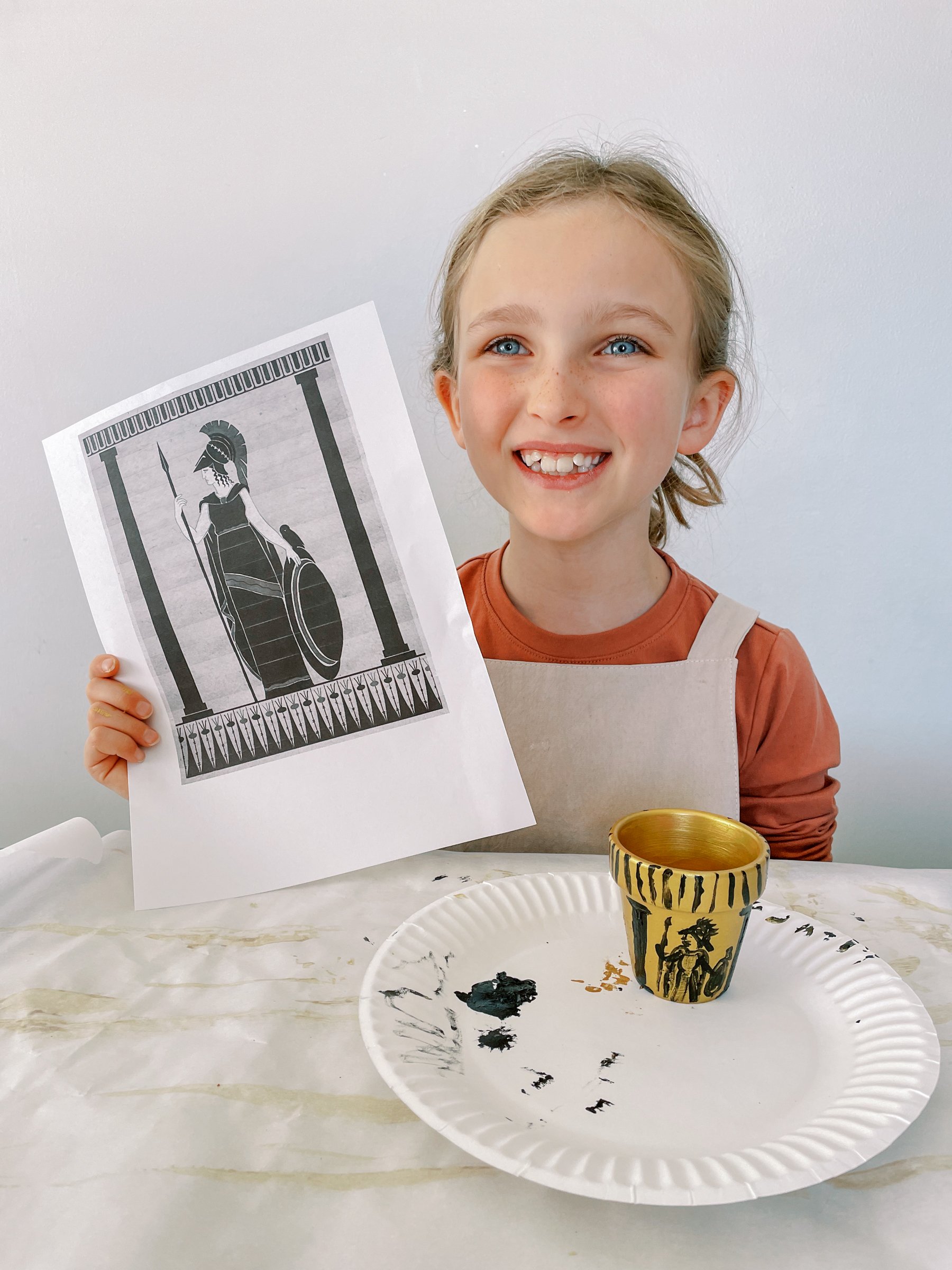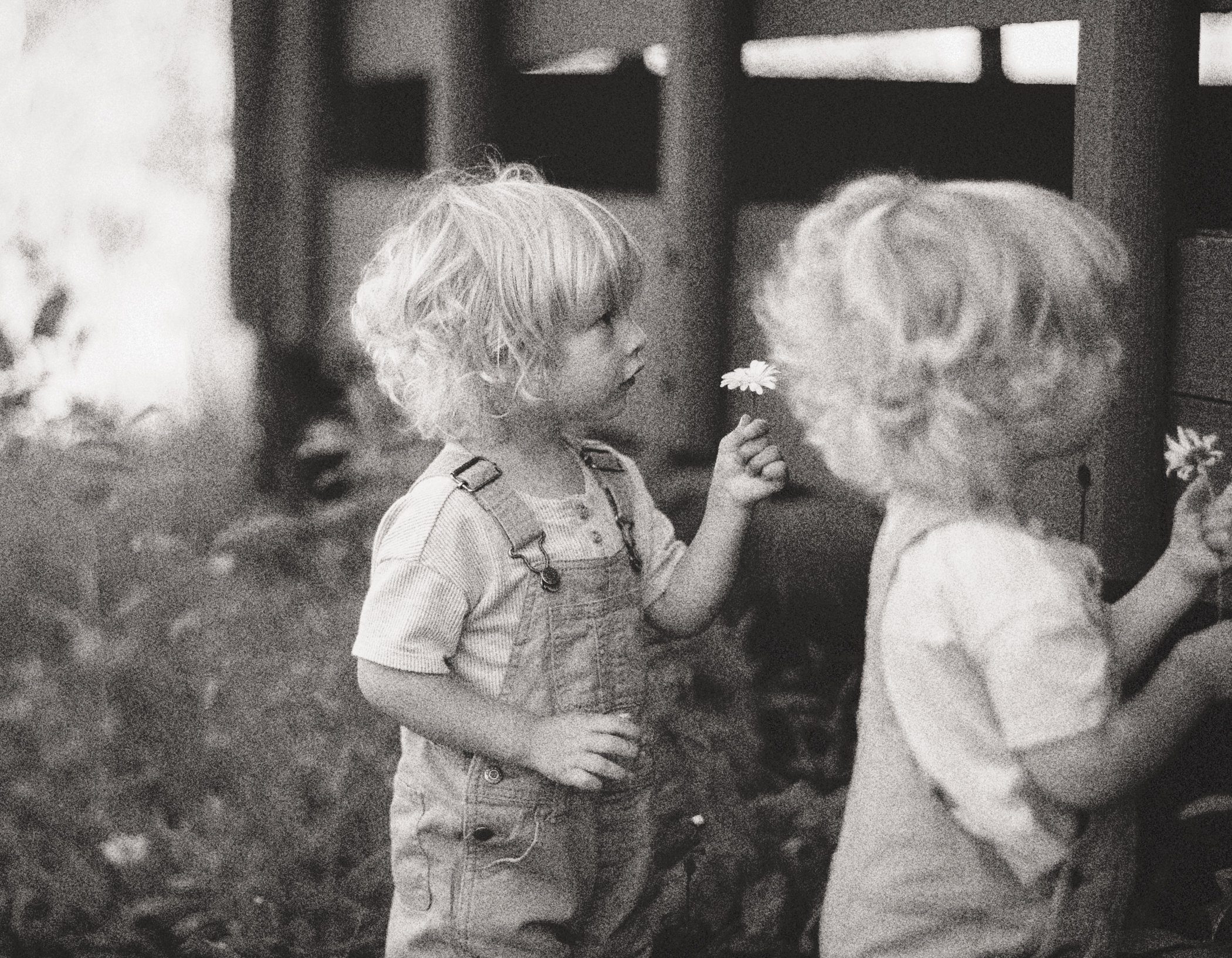What Does Homeschooling Multiple Ages Look Like?
/I am a mom of 5 kids ranging from almost 9 - 2 year old twins. To say our home can be chaotic sometimes is an understatement. I really didn’t know how in the world we would were going to make it when the twins were born. They were only a month old when we started homeschooling with a 2nd and preK student, along with our 2 year old. But we survived, and it was actually a great year. I am wondering again how we will make it happen this fall with twin 2 year olds, but I know we will find our way. If you have multiple ages you are schooling and littles, I hope this is a help. I’m still in the thick of it, so I can’t say I know everything. This is just works for us.
As I mentioned in this post, we have a loose schedule with anchor points. I’ll walk you through our typical day/ week and talk about the things that are our anchors.
Our Typical Weekly Checklist
4-5 Bible lessons
4-5 math lessons
4-5 language arts lessons
2-3 history lessons
1-3 science lessons
3-4 copywork pages
2-5 notebooking pages
1-3 crafts/ science projects
1 art or music lesson (on famous artists or composers)
1 poetry reading
3-5 times for instrument practice
1 outdoor outing or educational field trip
1 Latin lesson (starting this year)
How all of these lessons fit into our week will vary, depending on our schedule that day, attitudes and how the small children are behaving. For instance, if we have a dentist appointment, we might not get the math lesson until the afternoon, or while I am cooking dinner. The lessons we try never to miss are math, language arts and read aloud books (usually science or history) and/ or solo reading time.
My Homeschooling Approach
Before we get into the minutia of our homeschool day, I want to share my overarching goal for our learning. First and foremost, I want to develop our children’s character, their love for God’s word, and their awe of God through His creation. I want them to LOVE learning and end up able to educate themselves through a curious mind. My goal is to introduce a rich feast of “living books” (as opposed to dull textbooks), excellent literature, art, poetry, music and wonders from nature. In my teaching I try to weave all of these things together with math and science, so they can see all of learning is interconnected. I love this thought by Leonardo Da Vinci, “To develop a complete mind: Study the science of art; Study the art of science. Learn how to see. Realize that everything connects to everything else.”
This really sums up my view of learning. You cannot separate science from history, or art and music from math. It is all intertwined in a beautiful web that points to the genius of God’s designs. We often find what we read from our Bible lessons correlates to something we’ve learned also. It is beautiful to find. The vehicle for this is often through “living books”. I love our booklists from the Peaceful Press. We use them as a sparks for our curiosity and a launching board into other topics of study. You can even find “living” math books, such as the Sir Cumference Series you can find on this resource list. The practice of notebooking helps us achieve our goal to tie all learning together. We put everything from Taxonomy lists to historical figures and facts in the kids’ notebooks. They write down what they’ve learned with tidbits of art or poetry that goes along with the history or science we are learning. It’s beautiful to see it all together in one place. They put things down that fit their level of learning.
Our Daily Schedule
Here is our typical day fleshed out, but it can vary a lot depending on what’s going on in our lives.
7:30-8:30 - Wake, get dressed, eat breakfast, clean kitchen
8:30-9:00 - Circle Time for Bible reading, songs, prayer, and read aloud time
(This is an anchor point - everything else hinges on starting the day together and easing into our studies.)
9:30 - Book work: math, language arts, copy work or journal (in whichever order the kids choose)
10:30-11:30 - History or science “living books” or notebook page
(Another anchor point, since reading aloud is a vital part of our schooling, as is putting down our knowledge in a way the can be communicated clearly.)
11:30-12:00 - Walk and/ or outside time
(Anchor point - taking a break outside is good for everyone’s sanity and gives us something physical to do.)
12:00 - Lunch
1:00 - Twins are down for naps/ more history or science books
1:30 - Time for poetry, art, music, craft or anything else that needs finishing up
2:30-3:30 - Rest and reading time (or errands for me)
4:00-4:30 - Dinner prep
Homeschooling Multiple Ages with Little Ones
Homeschooling multiple ages is certainly not easy. I only have 2, almost 3 in formal lessons and it can be difficult. One thing I love about our “living books” is that they are suitable for many learning levels. I always invite any of our kids 2-4 years old to sit with us while I read to the older ones, but often they are playing in the floor. (Yes, I diffuse multiple squabbles over toys during our reading time. It is not always idyllic for sure!) It is incredible what they are soaking up while listening. Elias (our 3 year old) saw our capitol building and asked if it was the Taj Mahal a few months ago! In our time notebooking, I will have our 8 and 6 year olds doing different levels on the same material. I might have our kindergartener dictate something I will write down, or make blanks for her to fill in with appropriate grade level words, whereas I had our 3rd grader writing all her own sentences and adding more details. For math and language arts, I sit (or hover) between both of them to give instruction when needed. If I am teaching the kindergartener something for the first time (say the planets for example), I will have the older student review and learn how many days it takes for each to rotate. Our 3 younger ones may just repeat the words “Mars” and “Jupiter”. If we are studying a historical figure, I will give the oldest a person report and several chapter books and the younger a coloring page and read a simpler book to them.
It’s not an exact science on my part, but when we all learn the same thing at varying levels it helps me tremendously. Apart from math and language arts, we can essentially all be working on the same subject at differing levels of skill.
How to Involve Little Ones
Up until this spring, I had the twins napping during our morning school hours. When they dropped the morning nap with 2 months to go in the school year it was difficult. I anticipate that it will be somewhat easier to entertain them with projects now that they are 2 and have more interest in puzzles, etc. I have a little section of my school closet for little ones, which includes a wooden stacking rainbow, alphabet tracing board, blocks, odds and ends like popsicle sticks, puzzles, sorting objects, play silks and coloring items. (You can find most of what I have on this list.) I try to pull this out only during school hours. Usually the little ones come and go from the school area. Sometimes they are screaming for me, other times they are sweetly playing. They might start using the wooden sorting toy or crayons as vehicles for target practice…with myself and the older ones as the targets! In the afternoon I try to include older toddlers in painting or the craft project if they have interest.
Throughout our day I also try to take a few minutes here and there to interact with each toddler, teaching them their ABCs, numbers or colors. I also try to read them each one or two books of their choosing. The toddlers also get an alphabet tracing page and we say words that start with that letter as the older ones are doing things they can accomplish on their own. As you can imagine, I am “on” as teacher without a break for hours. (My tip is to get dressed before breakfast so that at least I am not in my jammies. For me personally, I feel better dressed. Plus, I require that my students are in regular clothes…so I should probably set an example! I can’t say that my teeth are always brushed before lunch though!) Doing these things with one child was magical. Doing it with multiple ages is less so, mostly because I rarely get to devote 100% of my attention to one child at a time. But I do try to in small bits.
Staying Inspired (and Sane)
Staying motivated as a teacher and fighting off burnout can be difficult. The days are FULL. Our learning times can feel so beautiful, but it is also draining on me as the primary teacher. If I don’t stay ahead it can feel like I’m barely keeping my head above water. I started trying to go on a “School Planning Date” once a month…often once every two months. I enjoy a treat while I research our upcoming topics and find fun activities or crafts to go along with our studies. I often have to learn things again for myself. It helps to dive in beforehand so I get excited about what we are learning. If I find something fascinating, it’s more fun to teach and hopefully my enthusiasm rubs off. It’s hard to be excited about putting on a youtube video and not having a clue about the topic. (Though I still do this from time to time!)
We also get outside when we hit roadblocks. When the toddlers are wreaking havoc, I am exhausted and about to lose it, or attitudes are not great, being outside is almost always the cure. It might look like a walk or we might give up studies for an extended period and go into the mountains. I don’t know that being outside has ever failed me. Sometimes we do school outside (in our yard or in the woods) just for a change of pace. It seems to be good for everyone’s state of mind.
When things get crazy, I also ask God for help. During the school year I do it quite often. It’s short, like, “Lord, please give me patience!” I need if often with 5 little voices are clamoring for my attention. I ask for HIS wisdom. As I said earlier, all of learning is intertwined and it all points to Him. I need His vision to see it and bring it out for my children. Often times it isn't their attitudes that need adjusting, but mine. Sanity hinges on seeking His help to love and teach them how He wants me to. I have to let go of some things I’d like to do for the most important things. He knows what I should be teaching, and it is pretty incredible how He helps me and gives me such gifts that I could not have planned so beautifully if I tried.
So I hope all of this is helpful to you, but ultimately you have to seek God for how He wants you to structure your days and teach your children. He chose YOU to be their mother. It is a freeing truth. I have often wondered why God thought I should be the mother of 5, but I do not understand His ways. He did, however, give me these children and He will provide the strength and wisdom to raise them. I find rest and freedom in realizing the burden of their education doesn’t lie solely on my shoulders. It isn’t all up to me to do it all. He will guide me, and I just need to follow. It is often difficult, but He is leading me and leading us. He will lead you too.

